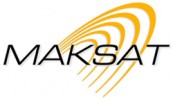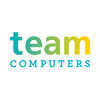Trainee Network Engineer
20+ Trainee Network Engineer Interview Questions and Answers

Asked in Cognizant

Q. What is network and tell me about oso layers
A network is a group of interconnected devices that communicate with each other. OSI layers are a model for understanding network communication.
OSI layers are a conceptual model for understanding how data is transmitted over a network.
There are seven layers in the OSI model, each with a specific function.
The layers are: Physical, Data Link, Network, Transport, Session, Presentation, and Application.
Each layer communicates with the layer above and below it, and each layer adds...read more

Asked in Cognizant

Q. Explain diffrent types of network? Give practical examples
There are several types of networks, including LAN, WAN, MAN, WLAN, and VPN.
LAN (Local Area Network) - a network that connects devices within a small area, such as a home or office.
WAN (Wide Area Network) - a network that connects devices across a large geographical area, such as the internet.
MAN (Metropolitan Area Network) - a network that connects devices within a city or metropolitan area.
WLAN (Wireless Local Area Network) - a LAN that uses wireless connections instead of ...read more
Trainee Network Engineer Interview Questions and Answers for Freshers

Asked in Web Development Company

Q. Which layer is used to transfer data?
The data transfer happens at the Transport layer.
The Transport layer is responsible for end-to-end communication between devices.
It ensures reliable data transfer and error correction.
Examples of protocols at this layer include TCP and UDP.

Asked in Cognizant

Q. What is TCP?why it is important
TCP is a protocol used for reliable transmission of data over networks.
TCP stands for Transmission Control Protocol.
It is a connection-oriented protocol that ensures reliable delivery of data packets.
TCP uses a three-way handshake to establish a connection between two devices.
It provides flow control, congestion control, and error detection and correction mechanisms.
TCP is used for applications that require reliable data transmission, such as email, file transfer, and web bro...read more

Asked in Web Development Company

Q. Tell me about Fiber.
Fiber is a high-speed transmission medium that uses thin strands of glass or plastic to transmit data.
Fiber optic cables are used in telecommunications to transmit data over long distances at high speeds.
Fiber offers advantages such as high bandwidth, low latency, and immunity to electromagnetic interference.
Fiber optic technology is used in various applications including internet connectivity, telephony, and cable television.
Examples of fiber optic providers include Verizon ...read more

Asked in NTT

Q. Tell me about Yourself Tell me about NTT What is networking What is router 7layer of OSI model
I am a network enthusiast with a passion for learning and problem-solving. NTT is a global technology services company. Networking involves connecting devices to share information. A router is a device that forwards data packets between computer networks. The OSI model is a conceptual framework that standardizes the functions of a telecommunication or computing system into seven layers.
NTT is a leading global technology services company providing networking solutions.
Networki...read more
Trainee Network Engineer Jobs


Asked in VSAN Technology

Q. How many types of colors are available for CAT6 cables?
There are various colors available for Cat 6 cables, including blue, green, red, yellow, black, and white.
Blue
Green
Red
Yellow
Black
White

Asked in Experis IT

Q. What are the uses of STP?
Spanning Tree Protocol (STP) prevents loops in network topologies, ensuring efficient data flow in Ethernet networks.
STP identifies and disables redundant paths to prevent broadcast storms.
It uses a tree structure to maintain a loop-free topology.
Example: In a network with multiple switches, STP will block some links to avoid loops.
STP elects a root bridge to manage the network topology.
It can dynamically adjust to changes in the network, such as a switch failure.
Share interview questions and help millions of jobseekers 🌟


Asked in Accenture

Q. What is the difference between IPv4 and IPv6?
IPv4 uses 32-bit addresses while IPv6 uses 128-bit addresses.
IPv4 allows for approximately 4.3 billion unique addresses while IPv6 allows for approximately 340 undecillion unique addresses.
IPv6 includes built-in security features such as IPsec while IPv4 requires additional security protocols.
IPv6 also includes features such as stateless address autoconfiguration and multicast addressing.
IPv4 headers are 20 bytes long while IPv6 headers are 40 bytes long.
IPv6 addresses are wr...read more
Asked in Intensity Global Technologies Limted

Q. What is the difference between a Layer 2 and Layer 3 switch?
L2 switches operate at the data link layer and make forwarding decisions based on MAC addresses, while L3 switches operate at the network layer and make forwarding decisions based on IP addresses.
L2 switches operate at the data link layer of the OSI model.
L3 switches operate at the network layer of the OSI model.
L2 switches make forwarding decisions based on MAC addresses.
L3 switches make forwarding decisions based on IP addresses.
L3 switches are capable of routing between di...read more

Asked in Maksat Technologies

Q. What is an RJ45 connector?
RJ45 connector is a standardized physical interface for connecting Ethernet cables to network devices.
RJ45 connector has 8 pins and is commonly used for Ethernet connections.
It is used to connect computers, routers, switches, and other network devices.
RJ45 connectors are typically used with Cat5, Cat5e, Cat6, or Cat6a Ethernet cables.
Asked in Telemax Services

Q. What is fiber optics?
Fiber optic is a technology that uses glass or plastic threads to transmit data as pulses of light.
Fiber optic cables are made up of thin strands of glass or plastic called fibers.
Data is transmitted through these fibers in the form of light pulses.
Fiber optic technology is known for its high bandwidth and fast data transmission speeds.
Examples of fiber optic applications include internet connections, telecommunications, and cable television.
Asked in VSAN Technology

Q. What is the color code for a straight-through Ethernet cable?
Colour code straight is a standard method of connecting network cables in a consistent manner.
Colour code straight is used for Ethernet cables to ensure proper connectivity.
It follows a specific pattern of matching colours on both ends of the cable.
For example, in T568A standard, the colour code for straight cable is white-green, green, white-orange, blue, white-blue, orange, white-brown, brown.

Asked in Himalaya Wellness

Q. What is DHCP and VLAN
DHCP is a network protocol that assigns IP addresses automatically, while VLAN is a way to segment a network into separate virtual networks.
DHCP stands for Dynamic Host Configuration Protocol
DHCP automatically assigns IP addresses to devices on a network
VLAN stands for Virtual Local Area Network
VLANs allow for segmentation of a network into separate virtual networks
VLANs can improve network security and efficiency

Asked in TCS

Q. Are you willing to relocate?
Yes, I am willing to relocate for the Network Engineer Trainee position.
I am open to exploring new opportunities in different locations
I understand that relocation may be necessary for career growth
I am willing to adapt to new environments and cultures
I have relocated for previous job opportunities and have had positive experiences

Asked in Web Development Company

Q. What are OSI Models?
OSI Models are a conceptual framework that standardizes communication protocols between different systems.
OSI stands for Open Systems Interconnection
It has 7 layers, each with a specific function
Layers are numbered from 1 to 7, with 1 being the lowest and 7 being the highest
Each layer communicates with the layer above and below it
Examples of layers include physical layer, data link layer, network layer, transport layer, session layer, presentation layer, and application layer

Asked in Novac Technology Solutions

Q. What is IP?
IP stands for Internet Protocol, a set of rules governing the format of data sent over the internet.
IP is responsible for routing data packets between devices on the internet.
It assigns a unique address to each device connected to the internet.
There are two versions of IP - IPv4 and IPv6.
IPv4 uses 32-bit addresses while IPv6 uses 128-bit addresses.
IP is a layer 3 protocol in the OSI model.
Examples of IP-based protocols include TCP, UDP, and ICMP.

Asked in Amara Raja Electronics

Q. What is a LAN network?
LAN network stands for Local Area Network, which is a network that connects computers and devices within a limited area such as a home, office, or building.
LAN networks are typically used for sharing resources like printers, files, and internet access within a small area.
LAN networks are usually faster and more secure than wide area networks (WANs) because they are confined to a smaller geographic area.
Examples of LAN technologies include Ethernet, Wi-Fi, and Token Ring.
Asked in Silicon house

Q. What is saas, cloud computing
SaaS is software delivered over the internet, while cloud computing refers to the on-demand availability of computer resources.
SaaS stands for Software as a Service and is a software delivery model where applications are hosted by a provider and accessed over the internet.
Cloud computing is the delivery of computing services, including servers, storage, databases, networking, software, analytics, and intelligence, over the internet.
SaaS is a subset of cloud computing, as it s...read more

Asked in Team Computers

Q. What is the OSI model?
OSI (Open Systems Interconnection) layer is a conceptual model that describes the communication functions of a telecommunication or computing system.
OSI model has 7 layers, each with a specific function
Each layer communicates with the layer above and below it
Layers are numbered from 1 to 7, with 1 being the physical layer and 7 being the application layer
Examples of layers include physical layer, data link layer, network layer, transport layer, session layer, presentation lay...read more
Interview Experiences of Popular Companies






Calculate your in-hand salary
Confused about how your in-hand salary is calculated? Enter your annual salary (CTC) and get your in-hand salary


Reviews
Interviews
Salaries
Users










